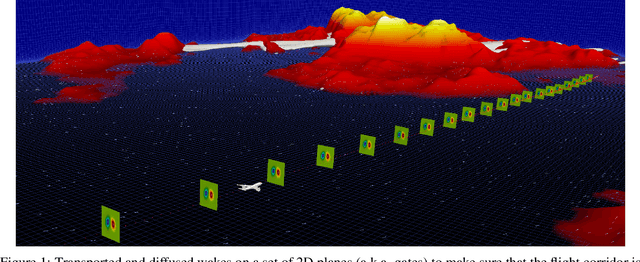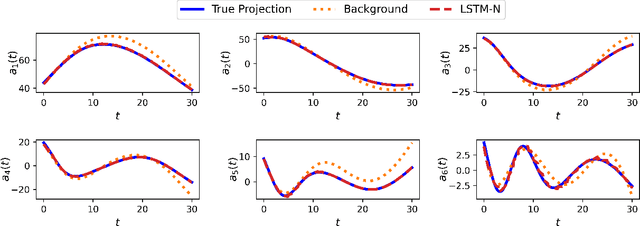Mandar Tabib
Machine Learning for enhancing Wind Field Resolution in Complex Terrain
Sep 18, 2023Abstract:Atmospheric flows are governed by a broad variety of spatio-temporal scales, thus making real-time numerical modeling of such turbulent flows in complex terrain at high resolution computationally intractable. In this study, we demonstrate a neural network approach motivated by Enhanced Super-Resolution Generative Adversarial Networks to upscale low-resolution wind fields to generate high-resolution wind fields in an actual wind farm in Bessaker, Norway. The neural network-based model is shown to successfully reconstruct fully resolved 3D velocity fields from a coarser scale while respecting the local terrain and that it easily outperforms trilinear interpolation. We also demonstrate that by using appropriate cost function based on domain knowledge, we can alleviate the use of adversarial training.
Geometric Change Detection in Digital Twins using 3D Machine Learning
Mar 15, 2021



Abstract:Digital twins are meant to bridge the gap between real-world physical systems and virtual representations. Both stand-alone and descriptive digital twins incorporate 3D geometric models, which are the physical representations of objects in the digital replica. Digital twin applications are required to rapidly update internal parameters with the evolution of their physical counterpart. Due to an essential need for having high-quality geometric models for accurate physical representations, the storage and bandwidth requirements for storing 3D model information can quickly exceed the available storage and bandwidth capacity. In this work, we demonstrate a novel approach to geometric change detection in the context of a digital twin. We address the issue through a combined solution of Dynamic Mode Decomposition (DMD) for motion detection, YOLOv5 for object detection, and 3D machine learning for pose estimation. DMD is applied for background subtraction, enabling detection of moving foreground objects in real-time. The video frames containing detected motion are extracted and used as input to the change detection network. The object detection algorithm YOLOv5 is applied to extract the bounding boxes of detected objects in the video frames. Furthermore, the rotational pose of each object is estimated in a 3D pose estimation network. A series of convolutional neural networks conducts feature extraction from images and 3D model shapes. Then, the network outputs the estimated Euler angles of the camera orientation with respect to the object in the input image. By only storing data associated with a detected change in pose, we minimize necessary storage and bandwidth requirements while still being able to recreate the 3D scene on demand.
A nudged hybrid analysis and modeling approach for realtime wake-vortex transport and decay prediction
Aug 05, 2020



Abstract:We put forth a long short-term memory (LSTM) nudging framework for the enhancement of reduced order models (ROMs) of fluid flows utilizing noisy measurements for air traffic improvements. Toward emerging applications of digital twins in aviation, the proposed approach allows for constructing a realtime predictive tool for wake-vortex transport and decay systems. We build on the fact that in realistic application, there are uncertainties in initial and boundary conditions, model parameters, as well as measurements. Moreover, conventional nonlinear ROMs based on Galerkin projection (GROMs) suffer from imperfection and solution instabilities, especially for advection-dominated flows with slow decay in the Kolmogorov width. In the presented LSTM nudging (LSTM-N) approach, we fuse forecasts from a combination of imperfect GROM and uncertain state estimates, with sparse Eulerian sensor measurements to provide more reliable predictions in a dynamical data assimilation framework. We illustrate our concept by solving a two-dimensional vorticity transport equation. We investigate the effects of measurements noise and state estimate uncertainty on the performance of the LSTM-N behavior. We also demonstrate that it can sufficiently handle different levels of temporal and spatial measurement sparsity, and offer a huge potential in developing next-generation digital twin technologies.
 Add to Chrome
Add to Chrome Add to Firefox
Add to Firefox Add to Edge
Add to Edge